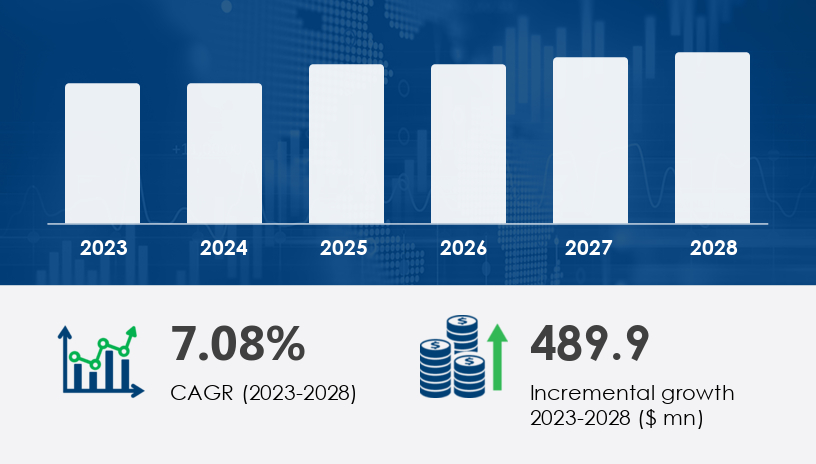Distributed Fiber Optic Sensing Market Size 2024-2028: Key Trends, Drivers, and Challenges
The Distributed Fiber Optic Sensing Market is projected to grow significantly between 2024 and 2028, with an estimated increase of USD 489.9 million at a CAGR of 7.08%. This growth is largely driven by the rising demand for infrastructure development, particularly in sectors such as oil & gas, power and utilities, and environmental monitoring. Additionally, the growing focus on structural health monitoring and civil infrastructure safety further supports market expansion. However, the high costs associated with advanced sensing systems remain a primary challenge.

For more details about the industry, get the PDF sample report for free
Market Segmentation
Application:
- Temperature sensing
- Acoustic sensing
- Other
End-User:
- Oil and gas
- Power and utility
- Civil engineering
- Industrial
- Safety and security
Geography:
- North America
- Europe
- APAC
- Middle East and Africa
- South America
By Application Insights
The temperature sensing segment is expected to see notable growth, particularly in distributed temperature sensing (DTS). DTS is gaining traction for pipeline monitoring, structural health assessments, and environmental monitoring due to its ability to measure temperature, strain, and pressure along the entire length of a fiber-optic cable. It has applications in industries like oil & gas, manufacturing, and infrastructure, and is vital for ensuring efficiency and safety.
Regional Insights
North America is anticipated to contribute 35% to the growth of the global market, driven by widespread adoption in industries such as oil and gas, automotive, and food and beverage manufacturing. The U.S. is the largest player in the region, and its military sector is also contributing to increased demand for distributed fiber optic sensing technologies.
Market Dynamics
Drivers:
- Surging Demand for Infrastructure Development: Distributed fiber optic sensing technology is crucial for structural health monitoring (SHM) in the oil & gas and power utilities sectors. The technology is increasingly being used to monitor the integrity of critical infrastructure, including pipelines, bridges, and dams.
- Real-Time Monitoring: The growing need for real-time monitoring in industries like environmental monitoring and civil engineering is propelling the adoption of fiber optic sensing systems.
Trends:
- Demand for Data Analysis: As distributed fiber optic sensing generates vast amounts of real-time data, advanced data analysis is essential for interpreting the insights. Industries are focusing on improving decision-making and operational efficiency through data-driven strategies.
Challenges:
- High Costs of Sensor Systems: The significant cost of deploying fiber optic sensing systems, along with the challenges in maintaining and replacing fiber cables, remains a major barrier. This is particularly true for industries operating in harsh environments, where detecting faults can be difficult.
Get more details by ordering the complete report
Key Players
- AFL Telecommunications GmbH
- AP Sensing GmbH
- Bandweaver
- Brugg Kabel AG
- Corning Inc.
- DarkPulse Inc.
- Halliburton Co.
- Intelligent Fiber Optic Systems Corp.
- Luna Innovations Inc.
- Makai Ocean Engineering Inc.
- NP Photonics
- OFS Fitel LLC
- Omnisens SA
- QinetiQ Ltd.
- Schlumberger Ltd.
- Silixa Ltd.
- Sumitomo Electric Industries Ltd.
- wenglor sensoric electronic devices GmbH
- Yokogawa Electric Corp.
- Ziebel